It was the second day that the King had knelt in the snow.
The wind whistling down from the heights of the Appenine Mountains had brought a blizzard upon the bee-sting rock, on which was perched the precipitous keep of Canossa. It piled a small drift around the sackcloth-enrobed form of Henry, King of the Romans, as he swayed slightly to-and-fro, reciting the Lord’s Prayer under his breath, over and over, entranced. His beard was frost-rimed, his hands and feet were raw, and his unseeing eyes were red-rimmed and bloodshot. Yet his resolve was cold iron. His sworn vassals, swaddled in furs and observing from the mouths of their tents, muttered to one another uneasily. More than once, a noble had resolved to save the King from his own folly – yet they had been stopped each time, by Henry’s wife Bertha of Savoy, a fierce faith alight in her eyes and her feet unshod in solidarity with her husband. Another day, she said. But one more night.
And yet, the gates remained shut.
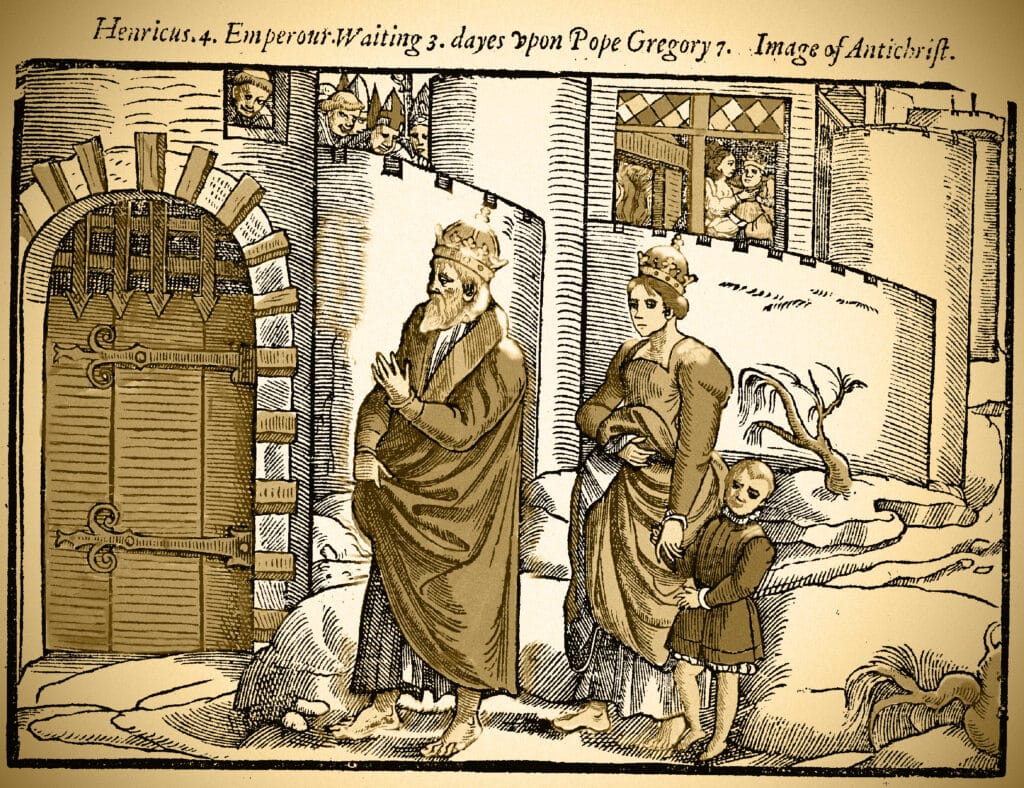
Unbeknownst to the Germans, the same uneasiness pervaded inside the Italian redoubt. Matilda of Tuscany, at whose castle this tense stand-off was playing out, sat across the high table from His Holiness Pope Gregory VII. They avoided eye-contact amidst an awkward silence, punctuated only by the whispered prayers of the Pope’s entourage and the crackling of the great fireplace. A creeping sense of doubt began to come over Gregory – a feeling which he interrogated as a sign from the Lord. Henricus might be a vile sinner, an excommunicate, even… But was it the Lord’s work to permit him to freeze outside the gates of the castle? Even unto death? The Pope opened his mouth, as if to speak, but then paused. No. This Henricus was no King of the Romans – merely a German King –come in the guise of a penitent, yes – but still determined to trespass the authority of the Almighty Himself. He would not be the first to break in this battle of wills between Heaven and Hell. Gregory shivered and clutched his crozier a little closer.
And yet, the gates remained shut.
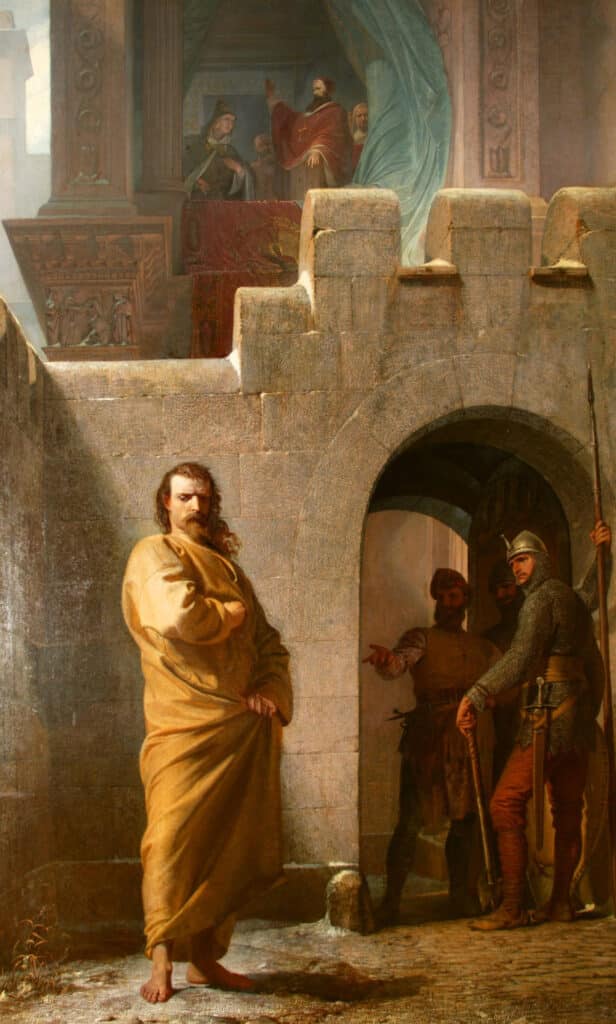
On the third day of King Henry’s penitence in the snow, Pope Gregory VII relented and opened the gates to the fortress of Canossa. He reconciled with the sinner-king, expunging Henry’s sins and repealing his excommunication. But this was not the end of a conflict, resolved by an act of humility: this was but one power-play between a Pope and a Holy Roman Emperor over the temporal power of the Catholic Church. Mere months after Henry’s obeisance at Canossa, war would break out again – a war which would not be properly resolved for almost fifty years. The very authority of the Papacy itself was at stake, and no humbling gestures, no matter how grand, could resolve it. The hostilities initiated between Gregory and Henry, which would outlast them both, has become known as the Investiture Controversy – and it shaped the Catholic Church as we know it today.
A Crozier and a Ring
The Investiture Controversy, unsurprisingly, was over who had control over the process of investiture: the process by which a person becomes an abbot, bishop or archbishop. The ceremony itself involved the appointee receiving their symbols of office: in the case of bishops in the Western Catholic tradition, this meant receiving a ring and a crozier (a hooked staff representing a shepherd’s crook), as well as one’s ceremonial clothing, or vestments (hence, investiture). In our modern times, when the affairs of the Church and the affairs of the State are largely separate, it can seem a bit of a moot point: why fight a war over who selects bishops? But in the Medieval era, things were very different – the Church was an enormously powerful and wealthy institution, whose officials were heavily relied upon by kings to staff a functioning state bureaucracy. Bishoprics came with sprawling lands, large incomes and powerful military forces. Thus, although the Church claimed the right of investiture, in reality appointing bishops was a political process in the hands of kingdoms’ ruling nobles – called ‘lay investiture’. Second and third sons of noble families would be invested as bishops, and would often pursue their factional and dynastic goals in the manner of any other noble. This process frequently involved infighting, all manner of cloak-and-dagger – or just outright corruption, damned as the sin of ‘simony’ by the Church.
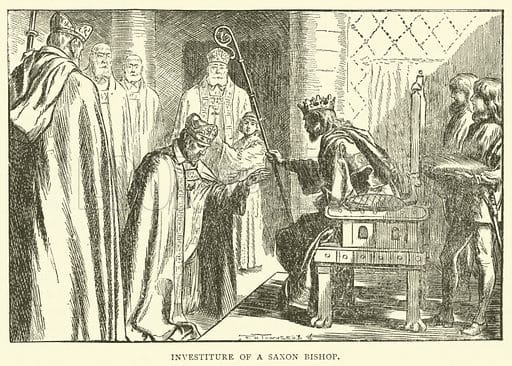
However, in the second half of the 11th century, a visionary Pope, Gregory VII, sought to sweep away what he perceived as the corruption of the holy institution. His Gregorian Reform would spark the uneasy relationship between Pope and Emperor into the inferno of the Investiture Controversy. To understand how this tontine turned toxic, we have to return to the very beginning of the Holy Roman Empire under Charlemagne.
Charlemagne and the Pope
The roots of the Investiture Crisis can be seen in the foundation of the Holy Roman Empire itself, and the tension between Emperor and Pope that it created. After the deposition of the last Roman Emperor, the ten-year old child Romulus Augustulus, by the barbarian general Odoacer, the traditions of Roman life did not simply vanish overnight. Many of the post-Roman ‘barbarian’ peoples simply assimilated into Roman ways, largely continuing the social and bureaucratic forms of the Empire. But the title of Imperator remained vacant, until Christmas Day, 800 CE – when Pope Leo III crowned the King of the Franks, a certain Charlemagne, as Imperator Romanorum (‘Emperor of the Romans’).
In the years after the disintegration of the Roman Empire, the Bishop of Rome had largely assumed temporal rule over the City of Rome. But his rule was an unstable one: Rome was nowhere near the powerhouse it once was, and his rule was largely at the leisure of whichever Lombard noble was in ascendency in Central Italy. Pope Leo III sought to secure a more lasting security by allying himself with Charlemagne, who had campaigned successfully against the Lombards some years before. On Christmas Day, Pope Leo offered Charlemagne the crown and the title of Imperator Romanorum in the Basilica of St. Peter. Although Charlemagne is said to have been entirely surprised by the offer, it seems we can put this interpretation down to the desire to paint Charlemagne as a modest and noble Emperor, since he must surely have known that the Pope would repay his support (indeed, Charlemagne’s previous letters to Pope Leo ask that the Pope pray for his victories exclusively!).
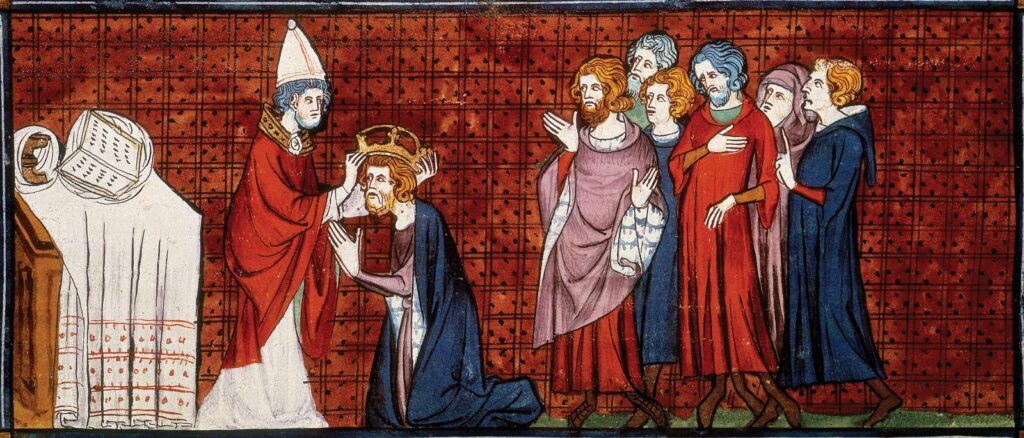
Thus, with the coronation of Charlemagne, an historic dynamic was set up between Pope and Emperor. The Bishop of Rome was already acknowledged as the head of the universal Christian Church (this being well before the Great Schism of 1054 which split Catholics and Orthodox) – and his unique sanction was a powerful justification for the Carolingian kings. But at the same time, it was a clever political play by the Pope. The symbolism of giving a crown is very pointed: it places the giver in a superior position, in which it is their gift to bestow. In a feudal world in which the giving of gifts was a ritualized process, nobody would have missed the meaning of this gesture, which made the title of Imperator Romanorum the exclusive right of the Pope to grant, rather than a title passed down by inheritance alone.
Otto’s Imperial Church
Thus, a delicate balance emerged, where both Pope and Emperor considered themselves to be the superior of the other. After the Carolingian Empire was split up amongst Charlemagne’s grandsons, the balance of power shifted in favor of the Pope, who used the title of King of the Romans as a carrot to whichever Italian noble would be willing to guarantee the independence of the Bishop of Rome. But the ambitions of Otto I ‘the Great’ set the stage for the Investiture Controversy. Otto extended the policy of lay investiture even further, adopting a conscious policy of turning the celibate clergy into a bureaucracy that was wholly dependent on his patronage. This meant that he would face fewer dynastic threats from his rivals – because they wouldn’t be having spare legitimate children! Otto even managed to insert his influence into the processes for selecting the Pope – it is widely acknowledge by historians that five Popes appointed during Otto’s reign were done so more or less at the appointment of Otto personally. However, all that was to change, with the accession of Pope Gregory VII in 1073 CE.
Gregorian Reform
Coming from humble beginnings in Northern Italy, a young abbot called Ildebrando (‘Hildebrand’) clawed his way to the top of Roman religious politics in the mid-11th century. Hildebrand was elected to the Papacy in 1073 CE, in a rare and unusual manner: by popular acclamation, with the cardinals and the crowds outside all calling spontaneously for his election, rather than casting ballots in secret. This legend underlines Hildebrand’s reformist zeal, and he took the Papal name Gregory, honor of an earlier reforming Pope.
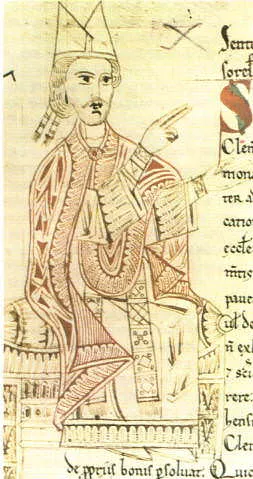
Seeking to ‘restore’ the prestige of the Papacy, and to extend the new ideas of Papal supremacy, Gregory set about the Gregorian Reform, a slate of reforms which sought to change the relations between bishops and the mundane world. It re-asserted the doctrine of clerical celibacy – but he also went much further. He asserted the sole right of the Papacy to appoint and dismiss bishops (against the traditional practice of lay investiture), and, most shockingly of all, the right to dismiss even the Holy Roman Emperor.
From Reform to Investiture Controversy
This was a direct threat to the traditional rights of the Kings of Germany. But Gregory would not have made such a claim if he did not see the possibility of enforcing it. The Holy Roman Empire had fragmented again under the successors of Otto the Great, and the current incumbent, Henry IV, was only twenty-three years old. Perhaps Gregory thought that he could make the claim over the weakened German kings uncontested – but, said Henry, Gregory has another thing coming. Henry IV responded in kind to the implicit threat in 1076 CE by declaring that by seeking to place himself above the Emperor the Pope had forfeited his position, and demanded that the Roman prelates choose a new one.
But this was somewhat of a miscalculation on Henry’s part. Whilst subtle interfering with the process of Papal election had become a tolerated fact of the Emperors’ rule, open disagreement with the supreme authority in the Christian Church was viewed by many German and Italian noble as unseemly and dangerous. Gregory VII followed through on his claimed rights over the Emperor: he not only excommunicated Henry and his advisors, he stripped the Emperor of his crown, and released all of his vassals from their feudal obligations to him. The Medieval equivalent of pressing the big red ‘nuke’ button.
Facing grumbling nobles who were already looking for a replacement King of the Germans, Henry agreed to make amends to the Pope. Hence, he went barefoot to the fortress of Canossa to prostrate himself before the Pope – for which the Pope made him wait three days barefoot in the snow.
From Investiture Controversy to War
But Henry’s abasement was only shortlived. Though the pope rescinded Henry’s excommunication, the fundamental question – who had the power to invest the clergy – remained unresolved. Rebellious nobles continued to plot Henry’s replacement, and thus the German kingdom dissolved into a low-level civil war, with Henry ending up excommunicated again. Both Henry and Gregory refused to budge – and so Henry marched an army into Italy, taking Rome in 1080 CE and placing his own pet Pope – Clement III – onto the Papal throne.
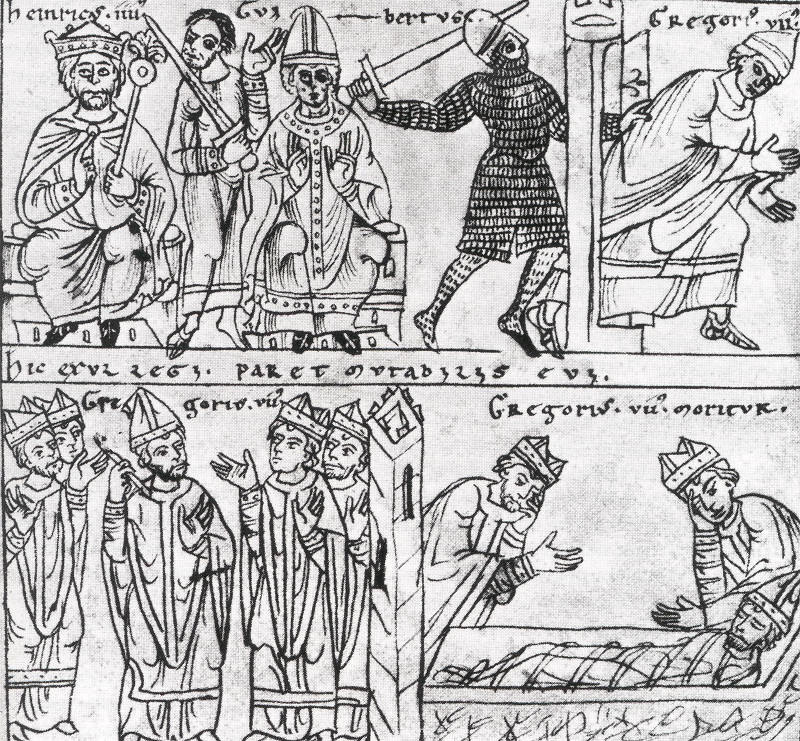
Although temporarily ascendent, Henry had to quickly withdraw, settling into a Cold War which would last for decades. Each successive Pope would attempt to stir up rebellion in Germany to undermine the Emperor, and the Emperor would march into Italy, meeting the armies of the Pope’s allies. One of the most important to mention here is Matilda of Canossa, at whose castle Henry IV made his plea for absolution – she was probably the wealthiest and most powerful woman of the High Medieval period, who had seized her ancestral lands against the legal claims of Henry.
A Bed of Worms
Finally, after 50 years of fruitless conflict on both sides of the Alps, Henry IV’s son Henry V finally concluded a lasting peace with the Pope at the city of Worms (pronounced ‘vorms’!), near modern Frankfurt. At Worms, Henry V gave up the right to invest churchmen with the ring and crozier, replacing the process with canonical elections – but the then-Pope Callixtus II in return ceded the presence of imperial officials at the elections, and the right of the Emperor to intervene in disputed results. At the same time, the Emperor was allowed to perform a separate ceremony in which the bishop was invested with a scepter, symbolizing the temporal land-grants from the Emperor to the cleric. How was the Investiture Controversy settled, then? Not by force of arms – but by a mutually-beneficial arrangement which preserved the separate spheres for Pope and Emperor.
The Investiture Controversy established what we might call an early separation between Church and State, at least in principle: it split off the spiritual functions of the leading churchmen (yes, they were all men), from their political land-holdings and material wealth – at least symbolically. This division would grow over time, becoming first embedded into the Holy Roman Empire’s constitution, in which certain bishops had a vote in the electoral college in choosing the Emperor, and eventually into the Enlightenment philosophy of a complete separation between spiritual and political life. And it all began with Henry IV getting frostbite in front of a castle!

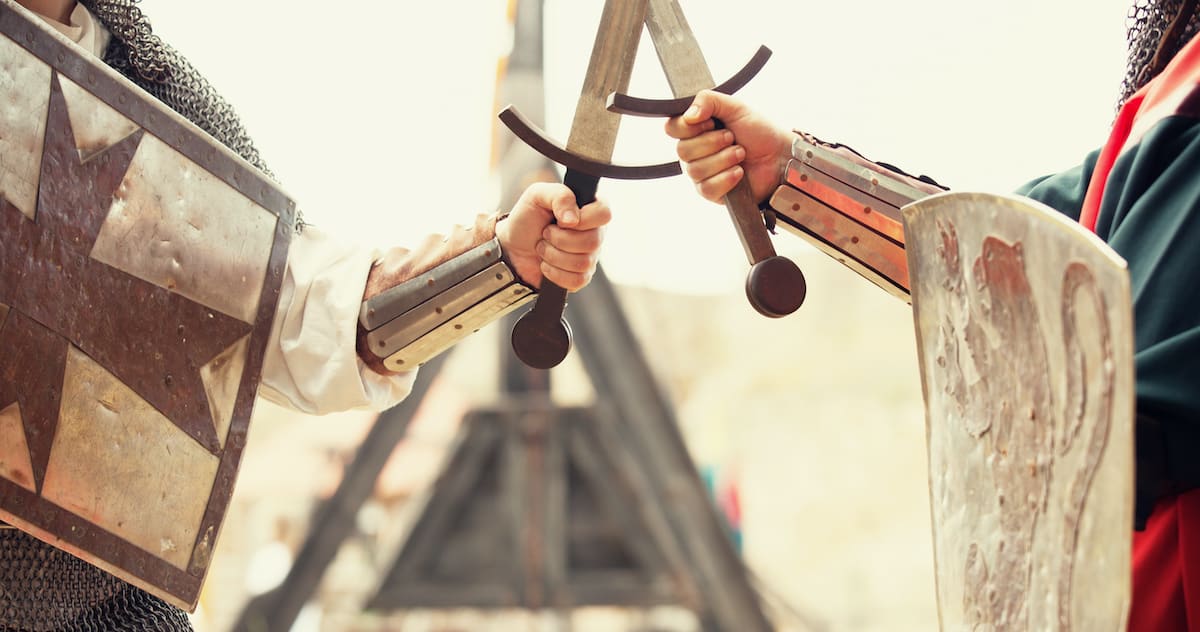 Historical Swords
Historical Swords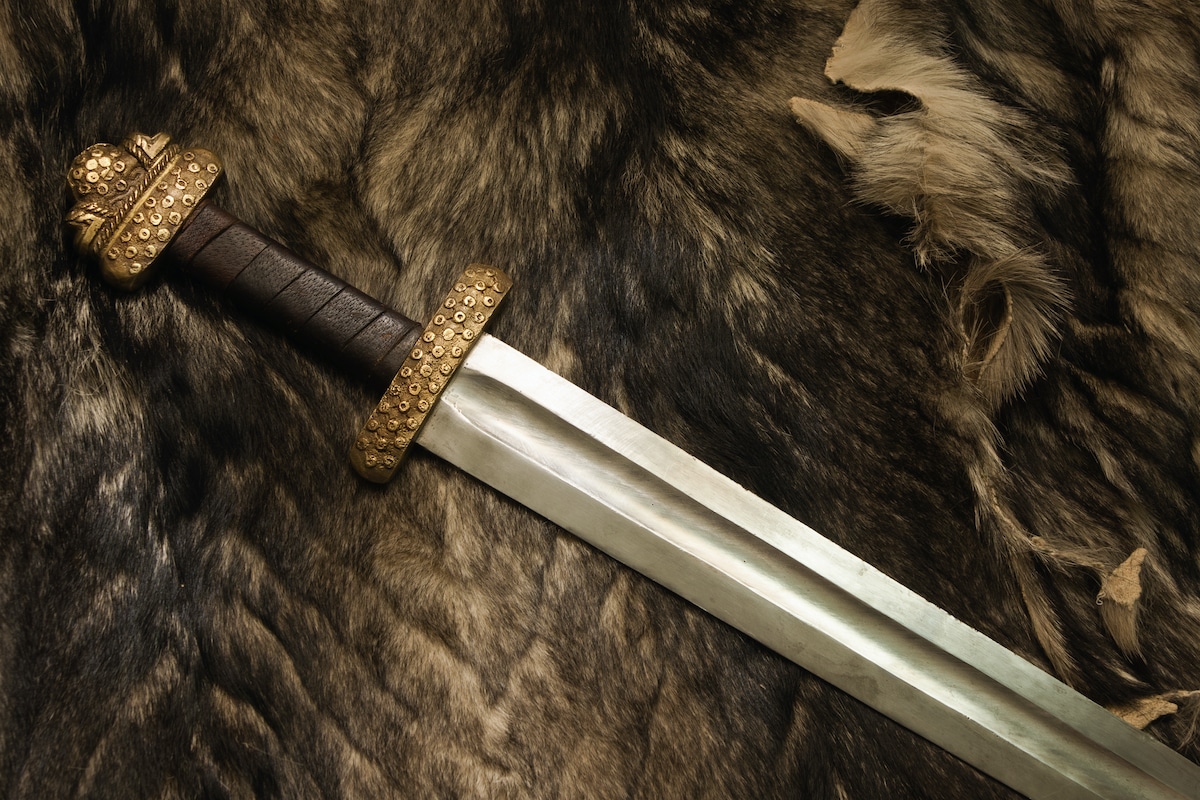 Norse & Viking Swords
Norse & Viking Swords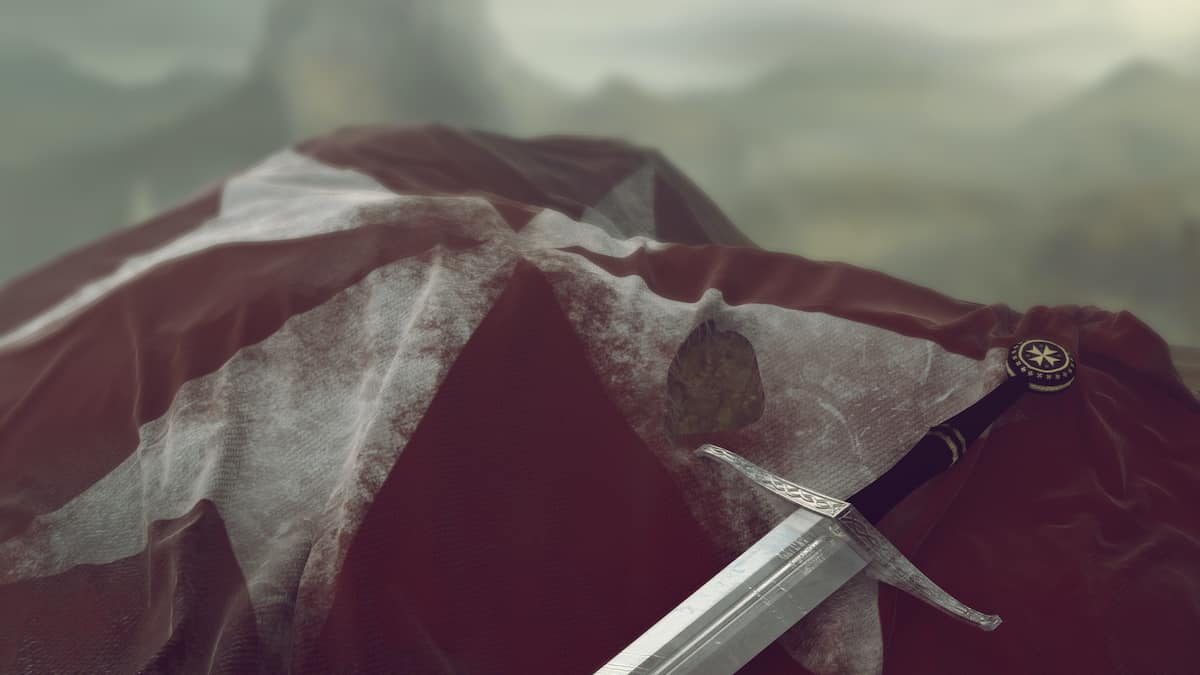 Templar Swords
Templar Swords Claymore Swords
Claymore Swords Fantasy Swords
Fantasy Swords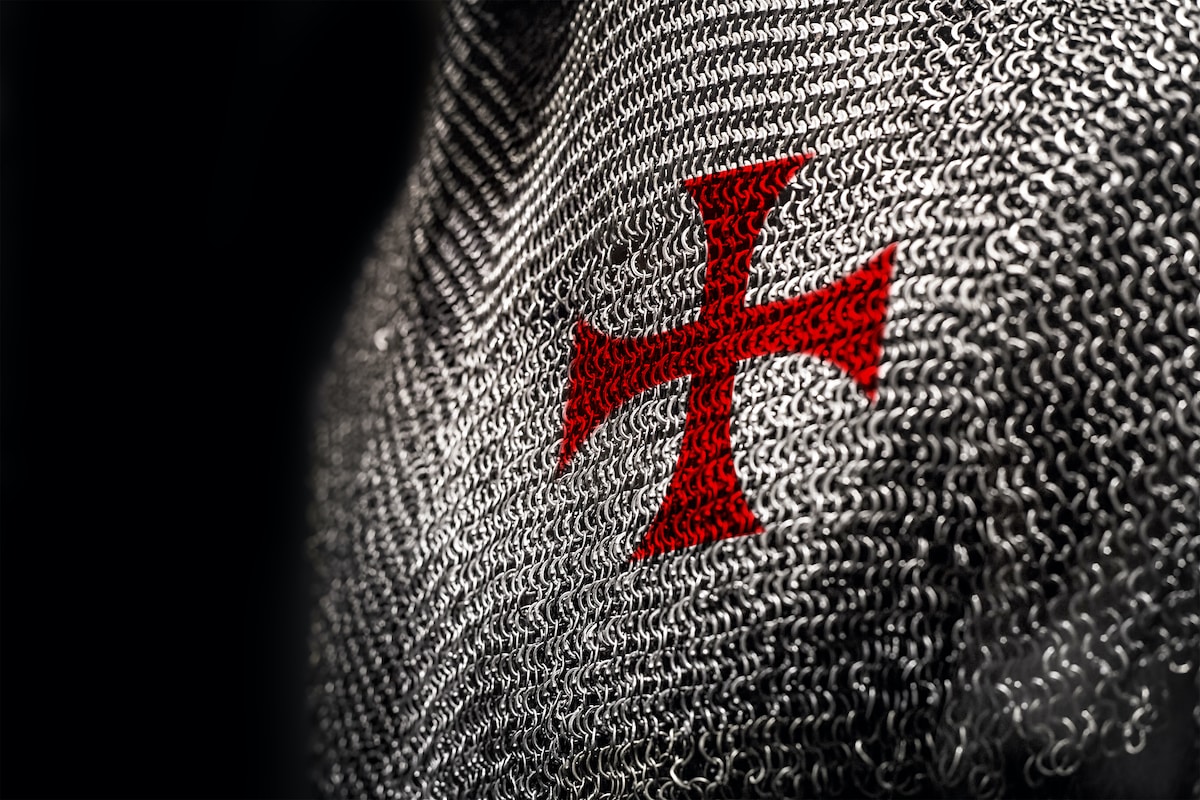 Chainmail
Chainmail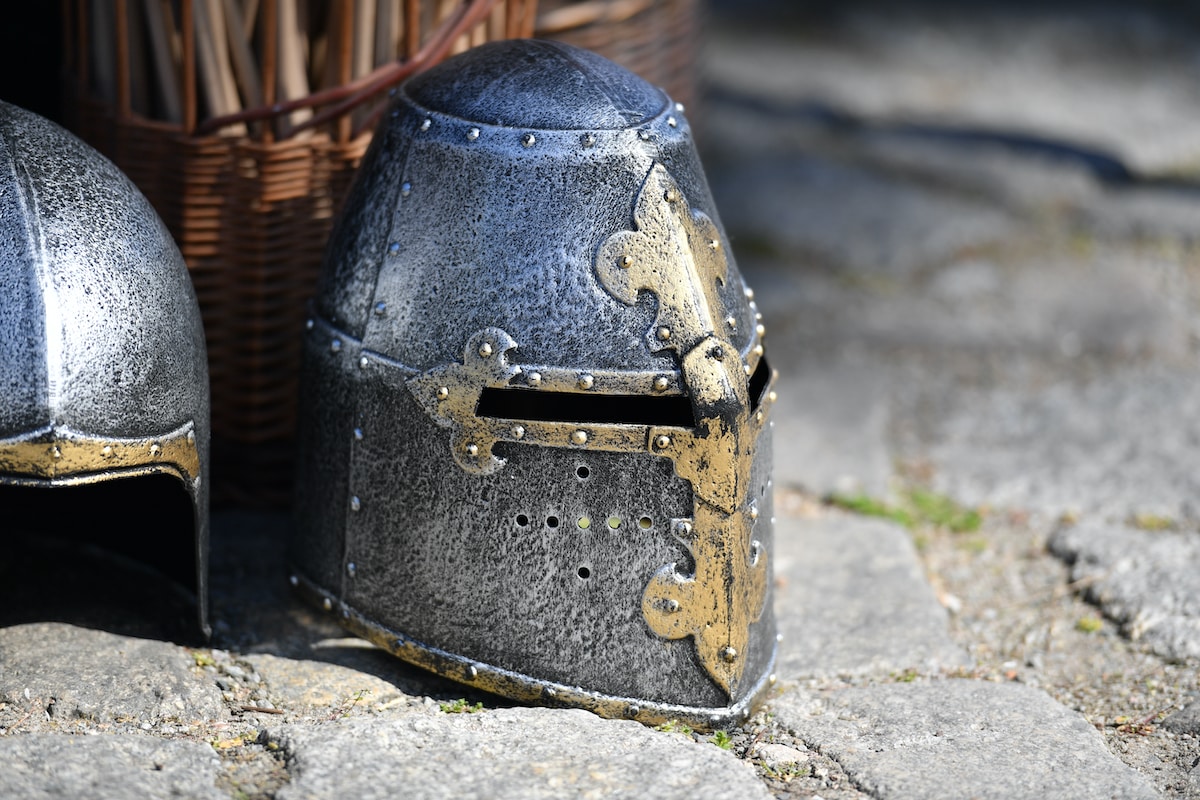 Helmets
Helmets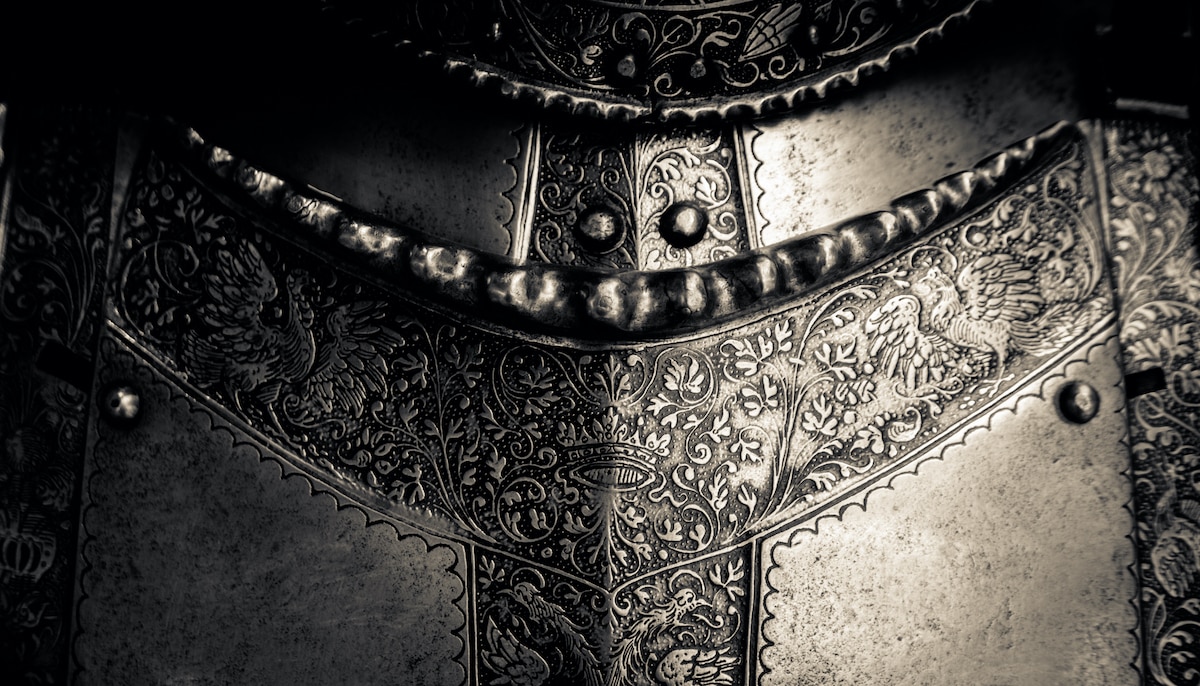 Torso Armor
Torso Armor Bracers and Arm Protection
Bracers and Arm Protection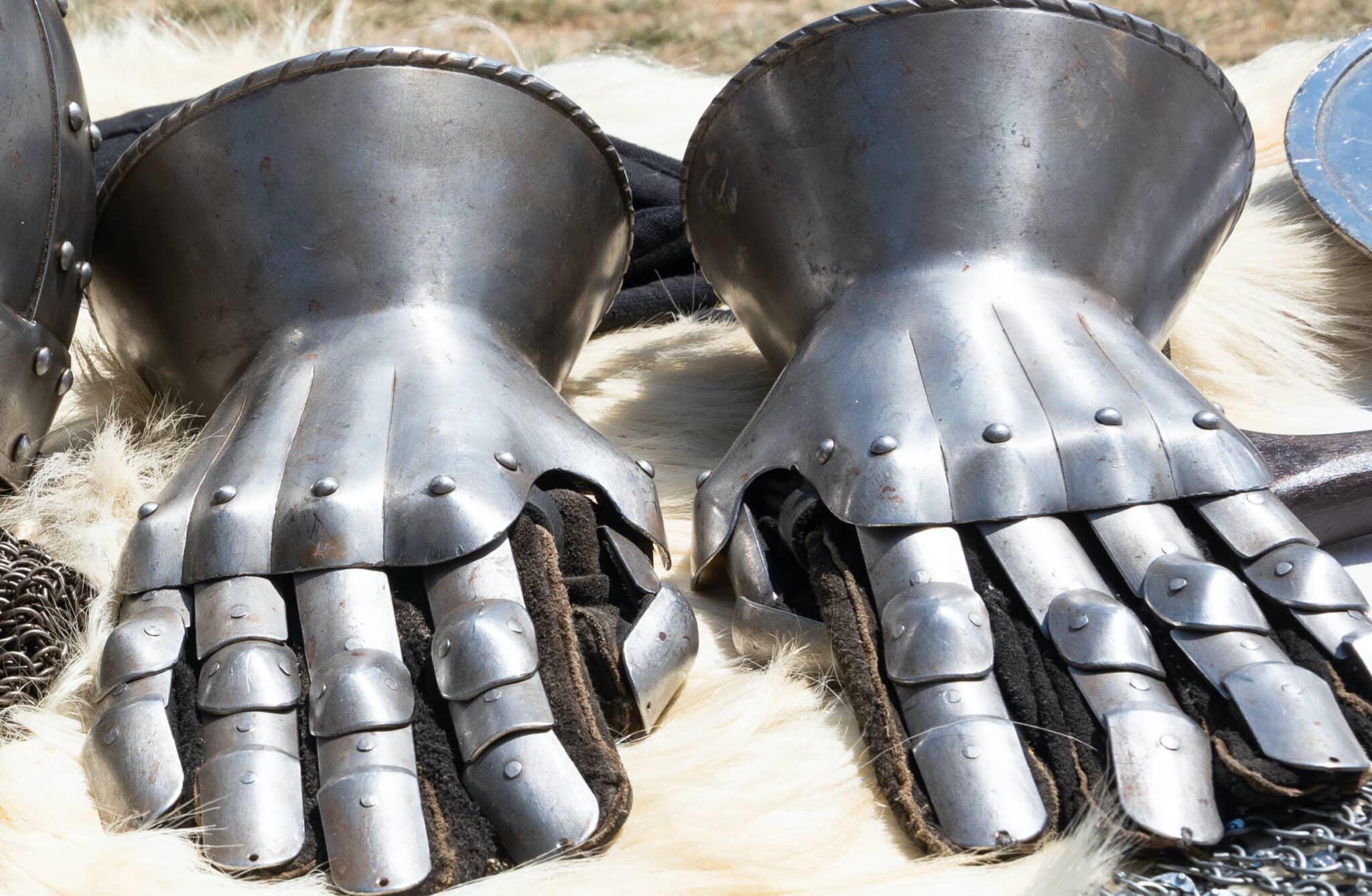 Gauntlets
Gauntlets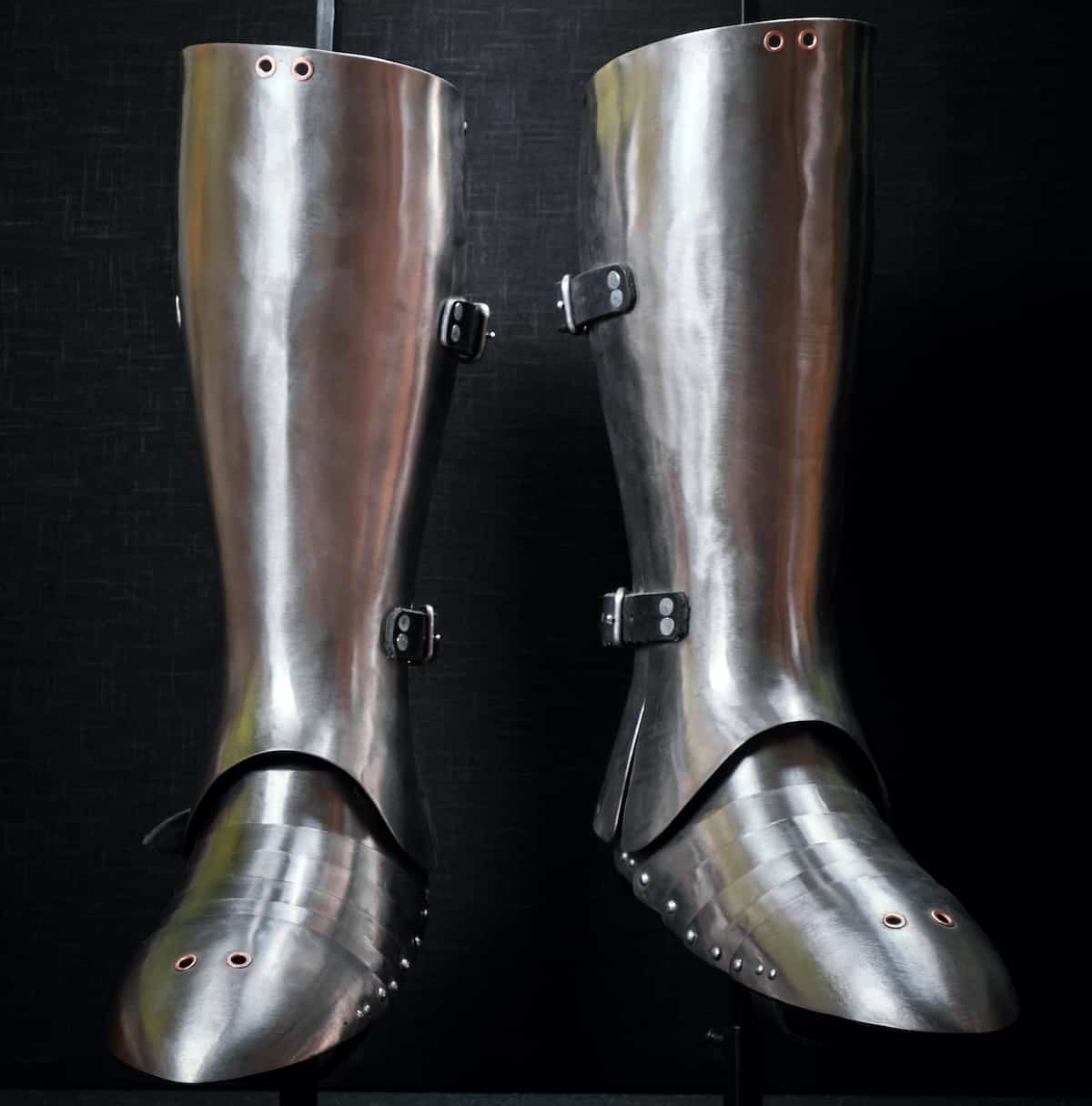 Leg Armor
Leg Armor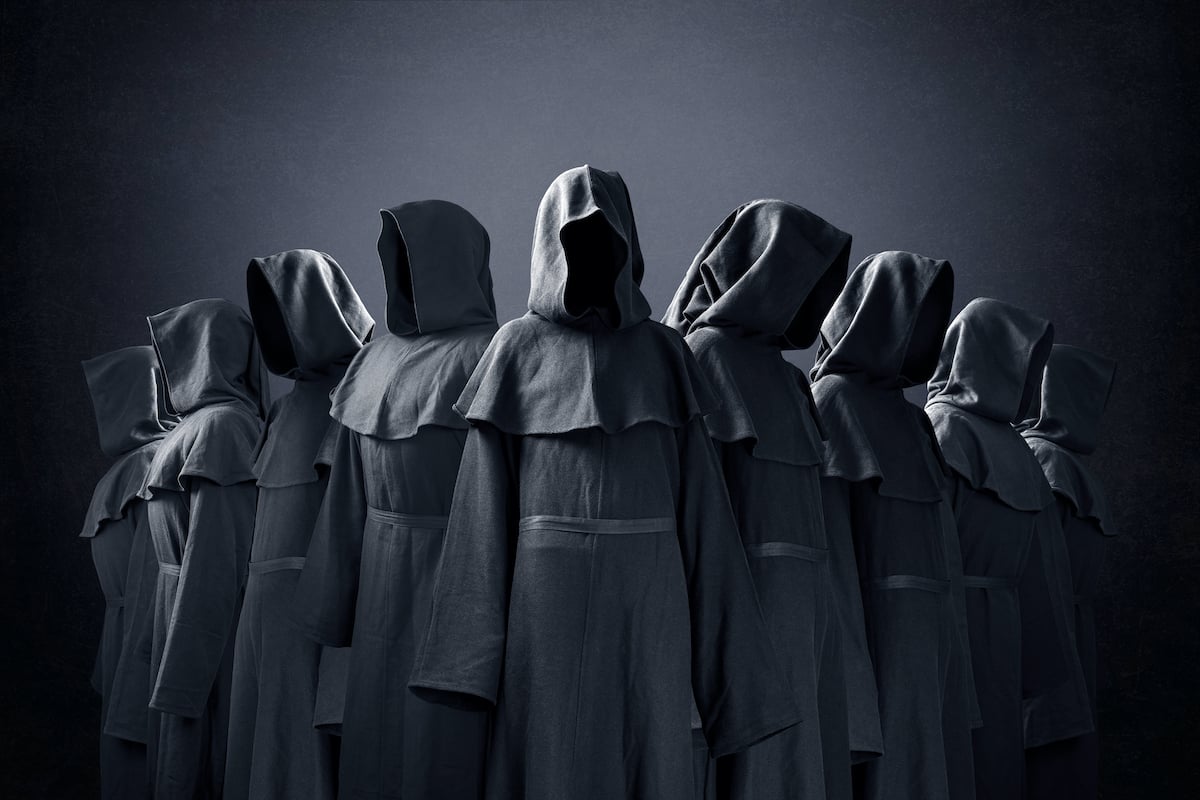 Cloaks
Cloaks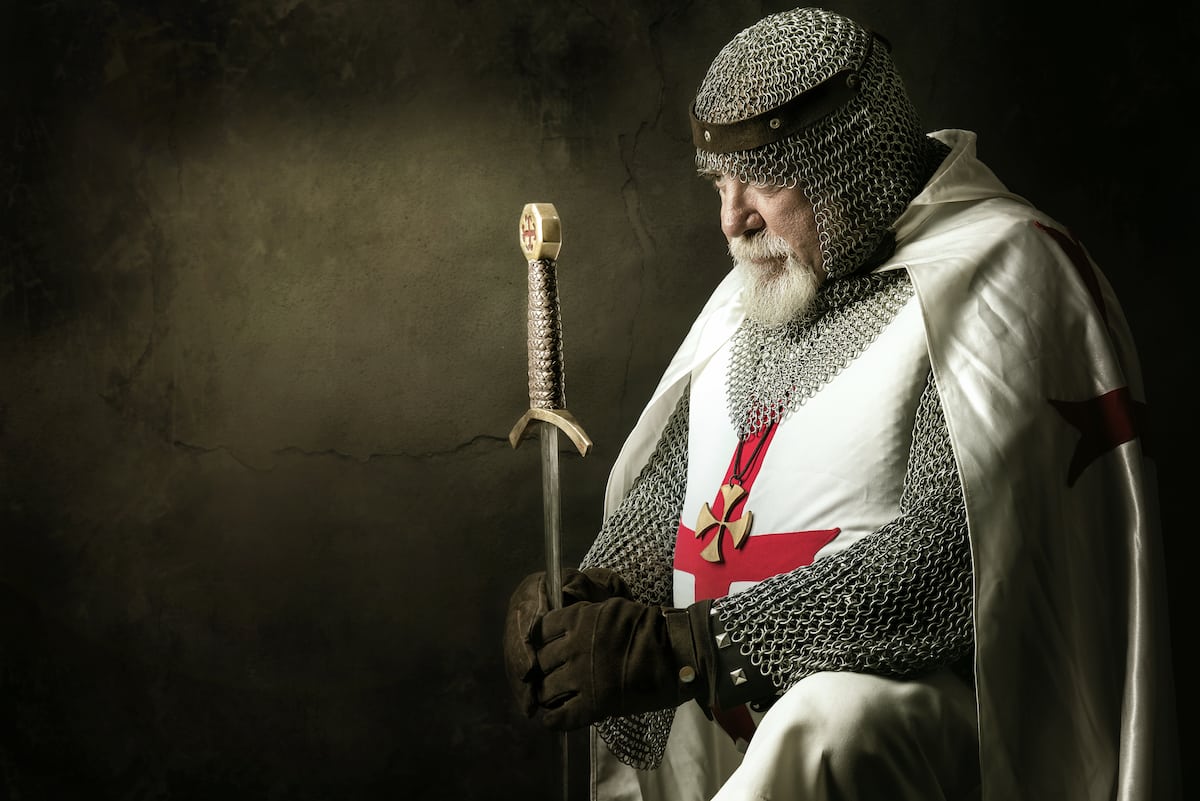 Tabards
Tabards Shirts
Shirts Tunics
Tunics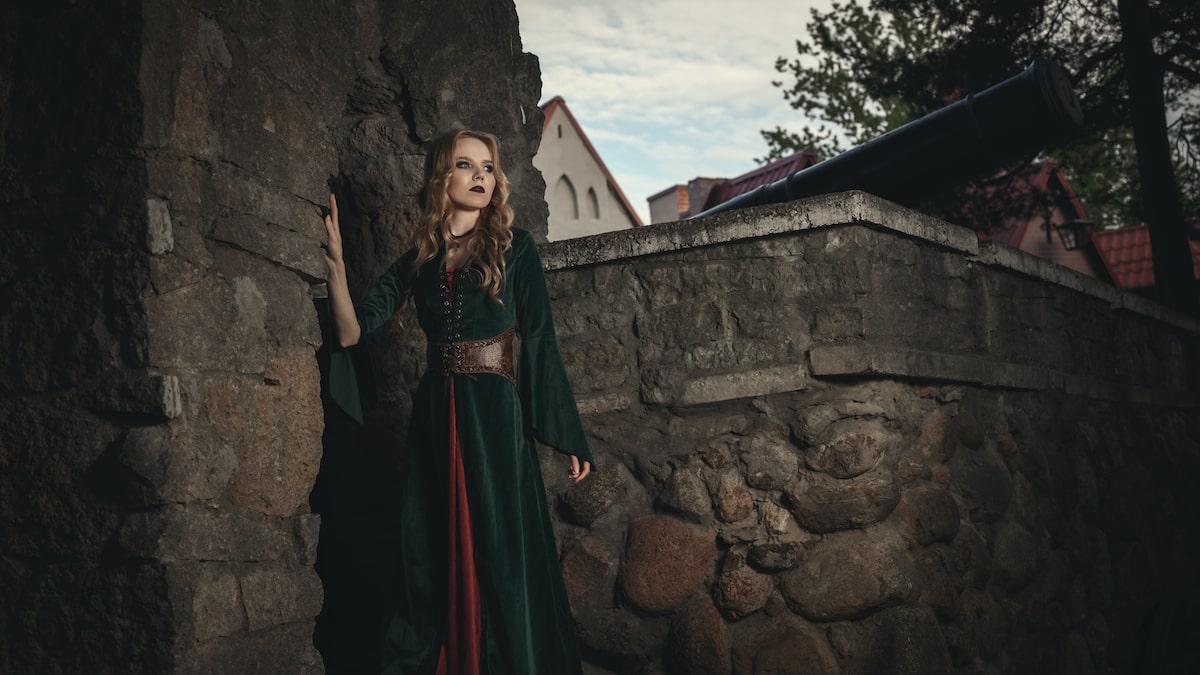 Dresses
Dresses Pants
Pants Gloves
Gloves Belts
Belts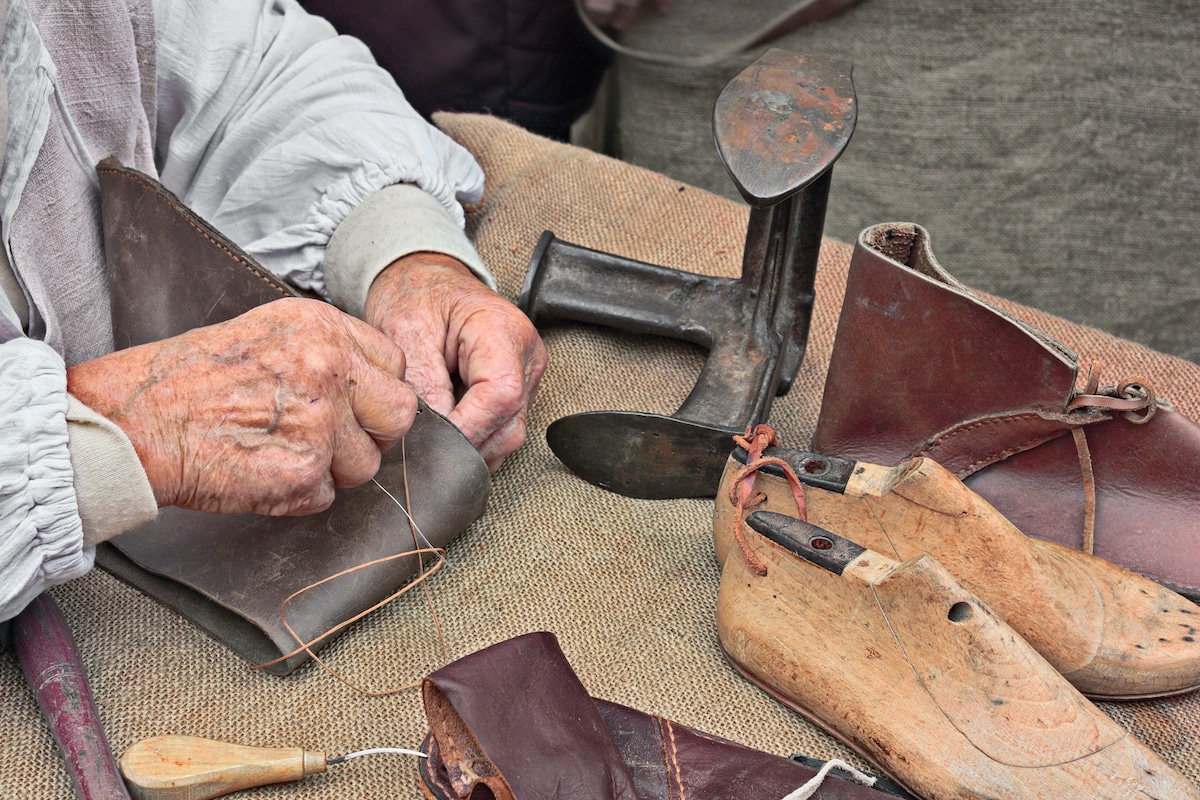 Shoes
Shoes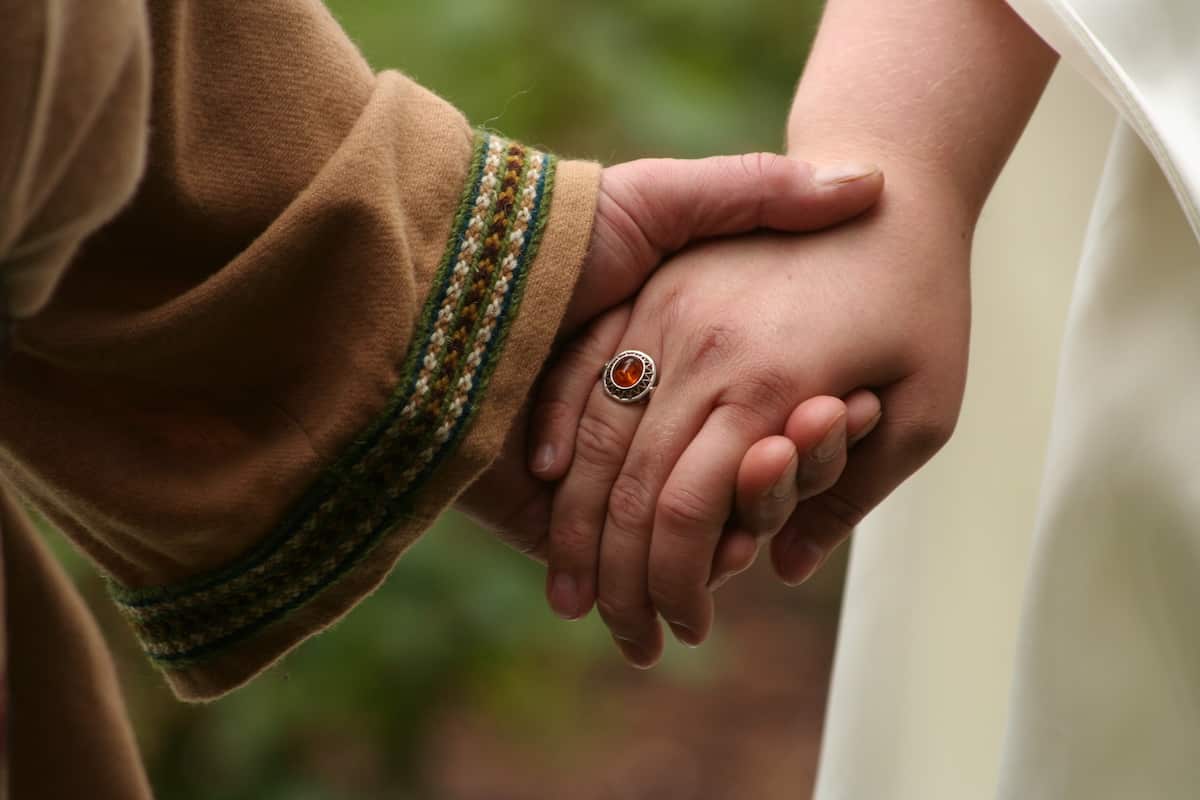 Rings
Rings Necklaces & Pendants
Necklaces & Pendants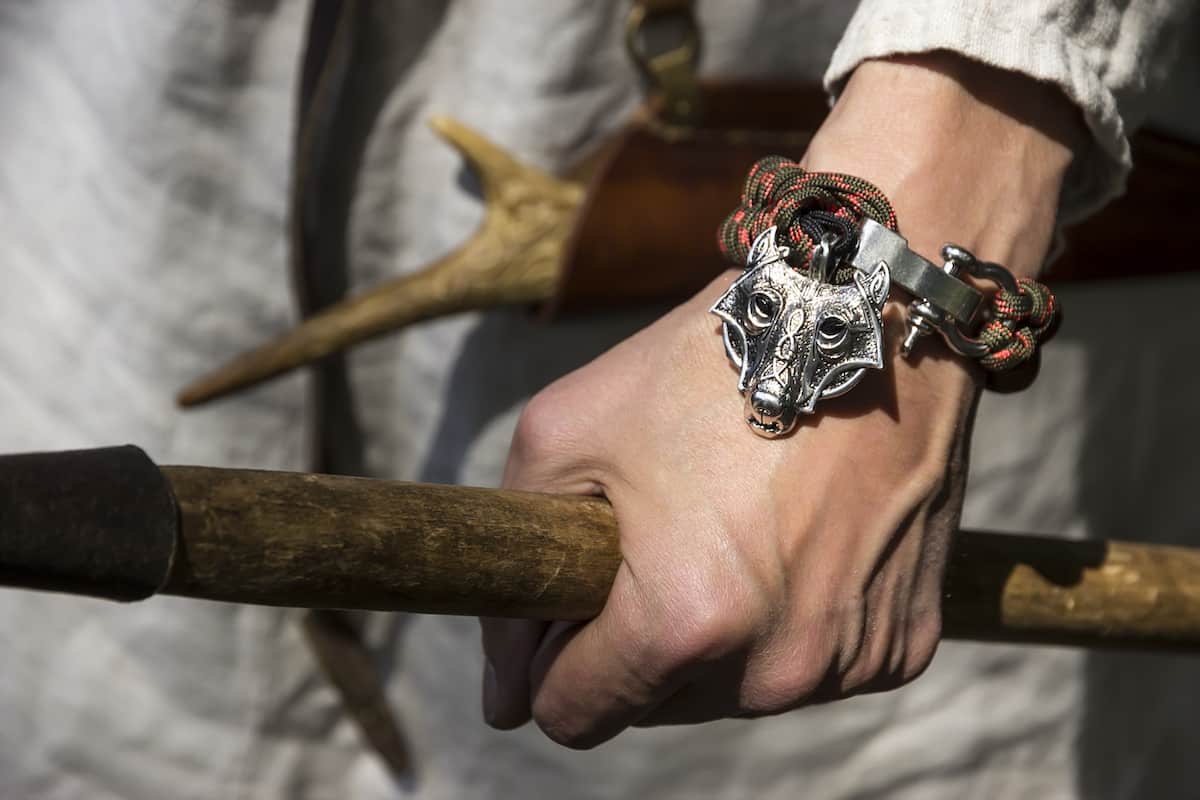 Bracelets
Bracelets


